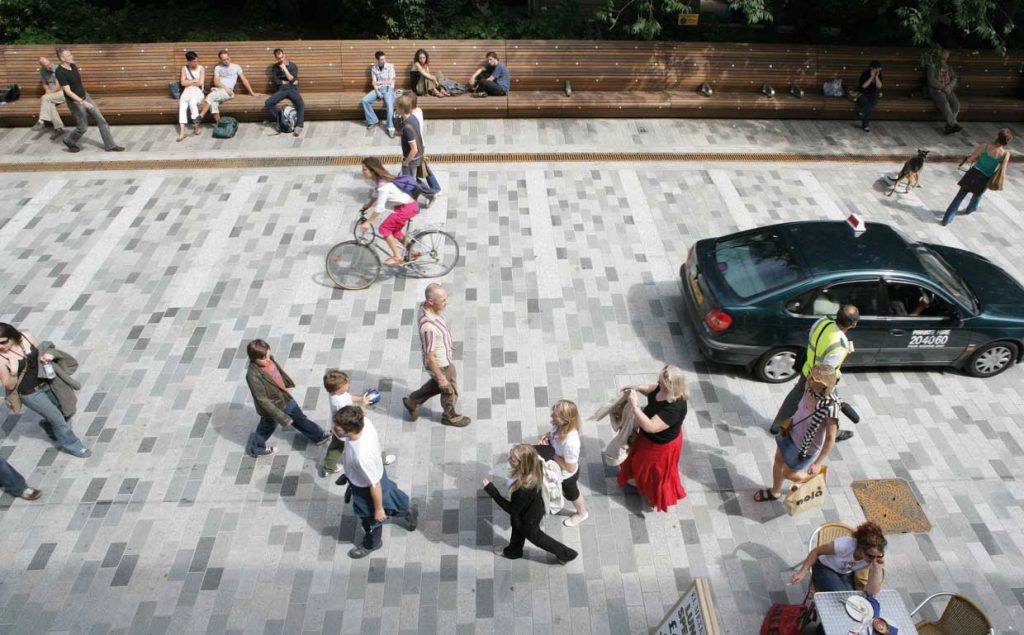A recent trip to Fareham, Hampshire, had me thinking about how public spaces and shop fronts engage. It was my first visit to Fareham and I have to say I was quite impressed with the variety and number of shops on the high street – far better than I’d expected. It was quiet (which in all honesty was nice as I’m not one for crowds who were probably at the beach!). Noticing how quiet it was both on the traffic-free high street and inside the shops got me thinking.
How do these shops survive with such low levels of customers? Online sales is an obvious answer as this is becoming the norm amongst shoppers in today’s society but will this eventually drive shops to close to save costs in staffing and overheads?
In the news recently a number of retail chains have announced closures of stores or announced restructure within their businesses. Some of these are big chains whose profits must dwarf some smaller businesses on high streets yet they are feeling the pinch.
But what does this have to do with Landscape Architecture I hear you cry! Well as designers within the public realm we create the public spaces that connect the doors of these shops to the outside world. Mixed pedestrian and vehicular spaces with traffic calming measures have ‘widened’ the high street allowing for easier, safer and faster shop transitions. Good design of public spaces is essential but can we really help to keep the high street alive in the long term?

Some of the factors affecting the footfall to local shops include:
- Online shopping; with continued growth, online only deals, lower prices than shops and fast delivery times
- The move towards online sales reduces the need for shops sitting on high numbers of stock from manufacturers
- High unit rental costs mean shops have increased overheads
- Convenience of continuously improving mobile and home internet connection and the ability to order from anywhere and at any time of day
Some of the factors helping footfall to local shops include:
- The ‘Click & Collect’ system employed by large numbers of retailers allows for fast customer ordering and collection but still allows for physical customer engagement in store
- Store only deals and targeted pricing can drive footfall and sales
- Some items, such as certain clothing, currently still require a shop fitting
- The rise in coffee shops brings people to the high street for social interaction where people tend to stay for longer and the engagement with shops is more likely
There are many more for and against factors helping and hindering shops but it does feel as though we are at somewhat of a turning point and each party need the other to function effectively. The public themselves want fast ordering, quick delivery and the ability to go to the shops for easy and quick returns if required. Town councils need the shops to drive local economy but they also need attractive public spaces to encourage ‘local’ shopping which in turn requires investment. Without the public space leading customers to cross the shop door thresholds the shops struggle and potentially close down. If the public spaces are run down or in need of investment people will go elsewhere and the shops customer footfall reduces. The public spaces need the influx of shops to function as intended and become rather redundant and a waste of investment without shops or shoppers to fill the space.
Public space water features can engage people and create attractive and fun public spaces.

Coincidentally whilst writing this blog I came across this post from February this year relating to Fareham itself:
http://www.farehamlabour.org.uk/labour-demands-review-ms-announce-closure/
But Fareham is far from alone. When I was studying at University we had a project set in the town of Dover. I remember our lecturers talking about how the high street of Dover is suffering from the exact same issue and undoubtedly many other towns are in the UK.
Some of the ways landscape architects, urban designers and public realm consultants can help include:
- Engaging with councils discussing how investing in re-designing, regenerating or simply improving public spaces can attract new shops and shoppers
- Design attractive public spaces that shops want to move to and the public want to shop; places with a sense of identity
- Design multi-use spaces. Food shops, socially engaging spaces and market ‘pop up’/event space will all attract different types of people at different times of the day/week
- Work closely with architects to design good engaging connections with shop fronts that allow for easy transitions between indoor and outdoor
- Influence how people interact with shops through the design and functionality of these public spaces such as pedestrianized high streets or traffic calmed areas to create safer and more connected spaces. These in turn will attract people instead of attracting vehicles and traffic!
- Along with other public realm consultants we can re-imagine and improve public transport links improving movement and circulation of pedestrians and vehicles
- Provide strategies to ‘design out’ crime making high streets and town centres safer and deterring vandalism
- Help in the positioning of key signposts and node points that can help with way-finding and reduce public confusion
Further reading:
https://www.theguardian.com/business/2018/apr/11/tough-year-high-street-internet-shopping-weak-pound
https://www.ft.com/content/a8f5c780-f46d-11e7-a4c9-bbdefa4f210b